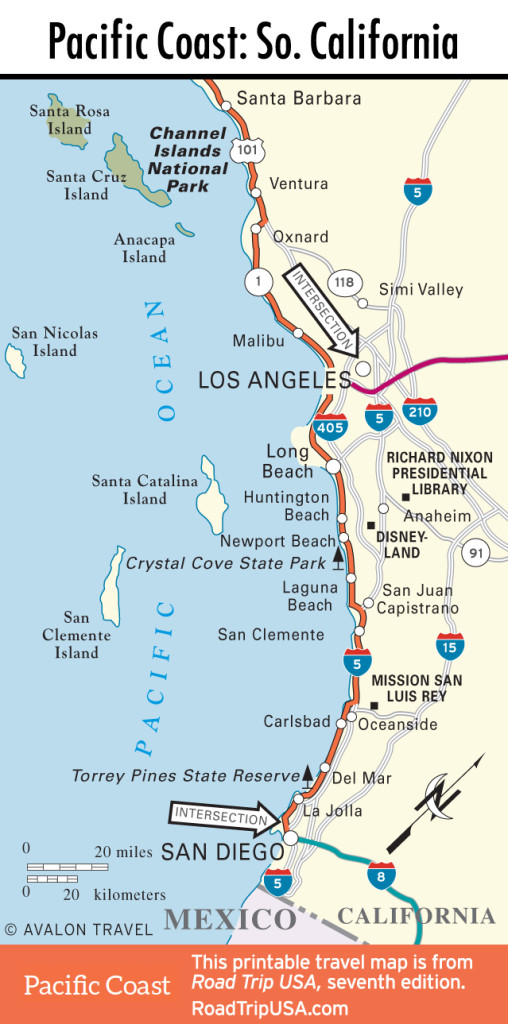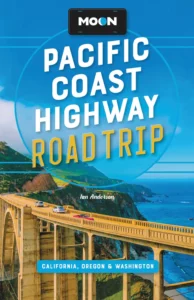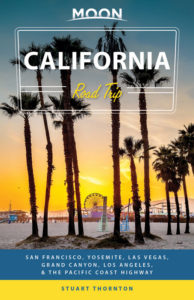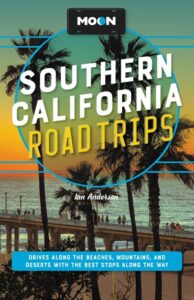Long Beach to Anaheim
Long Beach
Directly south of downtown Los Angeles, the city of Long Beach (pop. 462,257) is the second-largest of LA’s constituent cities, but it feels more like the Midwest than the cutting-edge West Coast. Long Beach is probably best known as the home of the cruise ship RMS Queen Mary (877/342-0742, tours $27), one of the largest and most luxurious liners ever to set sail. Impossible to miss as it looms over Long Beach harbor, the stately ship is open for self-guided tours. You can also stay overnight in one of the many staterooms and cabins, traveling back to a more elegant time for surprisingly reasonable overnight rates.
Across the bay on the main downtown Long Beach waterfront, the Aquarium of the Pacific (562/590-3100, daily, $30 adults) explores the diverse ecosystems of the Pacific Ocean, from tropical coral reefs (shown off in an amazing, 350,000-gallon display) to the frigid waters of the Bering Sea.
Other Long Beach attractions include a former “Wyland Whaling Wall.” The painting of migrating gray whales on the outside of the Long Beach Arena was once the largest mural in the world. You can also take a look at the self-proclaimed “Skinniest House in the USA” (708 Gladys Ave.); and a collection of memorabilia related to brother-and-sister pop singers Richard and Karen Carpenter, inside the main concert hall on the CSU Long Beach campus where they went to school.
Long Beach also marks the southern end of LA’s reborn rail transit system, and you can ride the Blue Line north to downtown and connect to everywhere else. It’s an inexpensive base for exploring the Los Angeles area, especially if you avail yourself of the Best Western (1725 Long Beach Blvd., 562/599-5555, $99 and up) right downtown, directly across from a Blue Line train stop.
Long Beach Travel Map
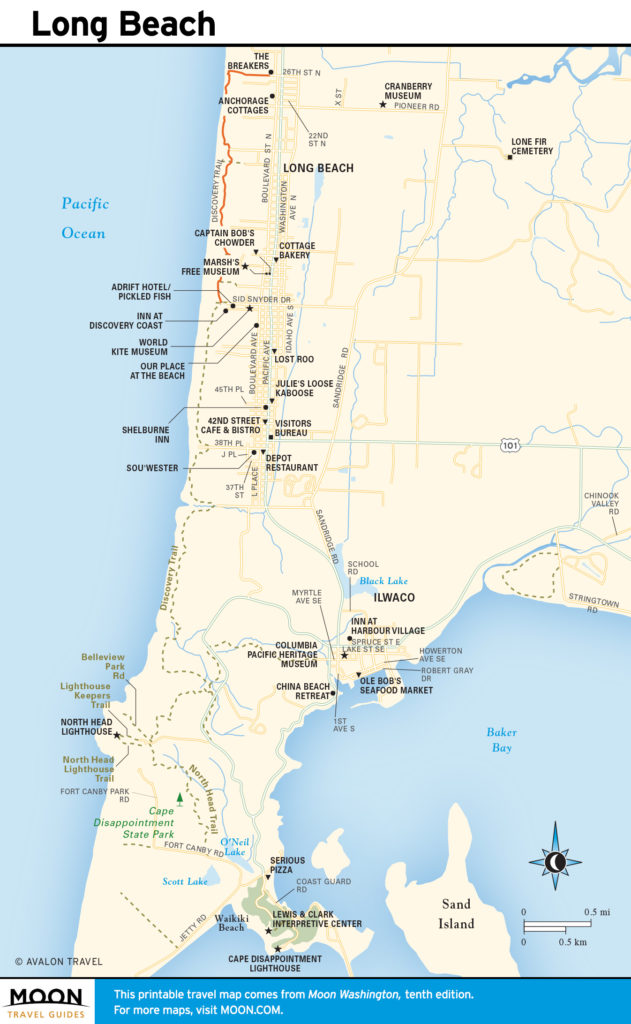
Huntington Beach
Winding south and east from Long Beach, Hwy-1 continues along the coast past a series of natural marshlands and small-craft marinas. The first real point of interest is the town of Huntington Beach (pop. 189,992), one of the largest communities in Orange County. Incorporated in 1909 and developed by Henry Huntington as a stop along his legendary Pacific Electric “Red Car” interurban railway network, Huntington Beach is best known as one of the places where surfing took off on the U.S. mainland.
To attract Angelenos down to his new town, Huntington hired Hawaiians to demonstrate the sport, which at the time made use of huge solid wooden boards, 15 feet long and weighing around 150 pounds. Huntington Beach, especially around the pier, is still a popular surfing spot—though contemporary surfers slice through the waves on high-tech foam-core boards, a third of the size of the original Hawaiian long boards. The history and culture of West Coast surfing, with examples of boards then and now (plus special collections highlighting surf movies and the creation of surf music by local heroes Leo Fender and Dick Dale), is recounted in the fantastic International Surfing Museum (411 Olive Ave., Tues.-Sun. 12pm-5pm, $2), two blocks from the pier in the heart of the lively downtown business district.
Anaheim and Disneyland
Like a little bit of middle America grafted onto the southern edge of Los Angeles, inland Orange County used to feel like a totally different world. Though the area’s demographics have changed considerably in the past decade or two, becoming more a part of LA’s fast-paced, edgily creative multiethnic stew, Orange County in the 1950s and 1960s was suburban America writ large—mostly white, mostly well-off, and absolutely, totally bland. In short, a perfect place to build the ultimate escapist fantasy, the self-proclaimed “Happiest Place on Earth,” Disneyland (714/781-4565).
The phenomenon of Disneyland has been done to death by all sorts of social critics, but the truth is, it can be great fun—provided you visit out of season, get there early to avoid the crowds, and immerse yourself in the extroverted mindless joy of it all. (Being here in the company of appreciative 8- to 12-year-olds is probably the best way to maximize your enjoyment.)
If you haven’t been before, or not for a while at any rate, here are some useful tidbits of information: Disneyland is 30 miles south of downtown LA, right off I-5 in the city of Anaheim—you can see the Matterhorn from the freeway. The park is open daily; in summer, it remains open until midnight. Admission to the park, which includes all rides, costs $112 and up per person per day.
Disneyland opened in 1955, when there was nothing surrounding it; in intervening years, an entire metropolis has grown up around it. In 2001 the park was joined by the much smaller, more grown-up-oriented Disney California Adventure theme park. This billion-dollar park has thrill rides like the Incredicoaster and the excellent Soarin’ Around the World motion simulator, offering an airborne tour of the Golden State from Yosemite Falls to the Malibu beaches. The pièce de résistance is Cars Land, based on the animated Pixar film and featuring the 40-mph Radiator Springs Racers, which simulates a race down Route 66. Disney California Adventure is separate from Disneyland, but a Park Hopper pass allows entry into both.
The whole Disney ensemble includes an upscale resort-hotel complex, surrounded by motels and yet more motels, and it is well worth staying overnight so you can get an early start, go “home” for a while, then come back for the nightly fireworks show. A highly recommended place to stay is the Sheraton Park Hotel (1855 S. Harbor Blvd., 714/750-1811, $240 and up), a block from Disneyland, offering spacious modern rooms and a nice pool, with Anaheim Resort Transit running every 20 minutes to and from Disneyland ($6 over age 9, $2.50 ages 3-9).
Southern California Travel Map
